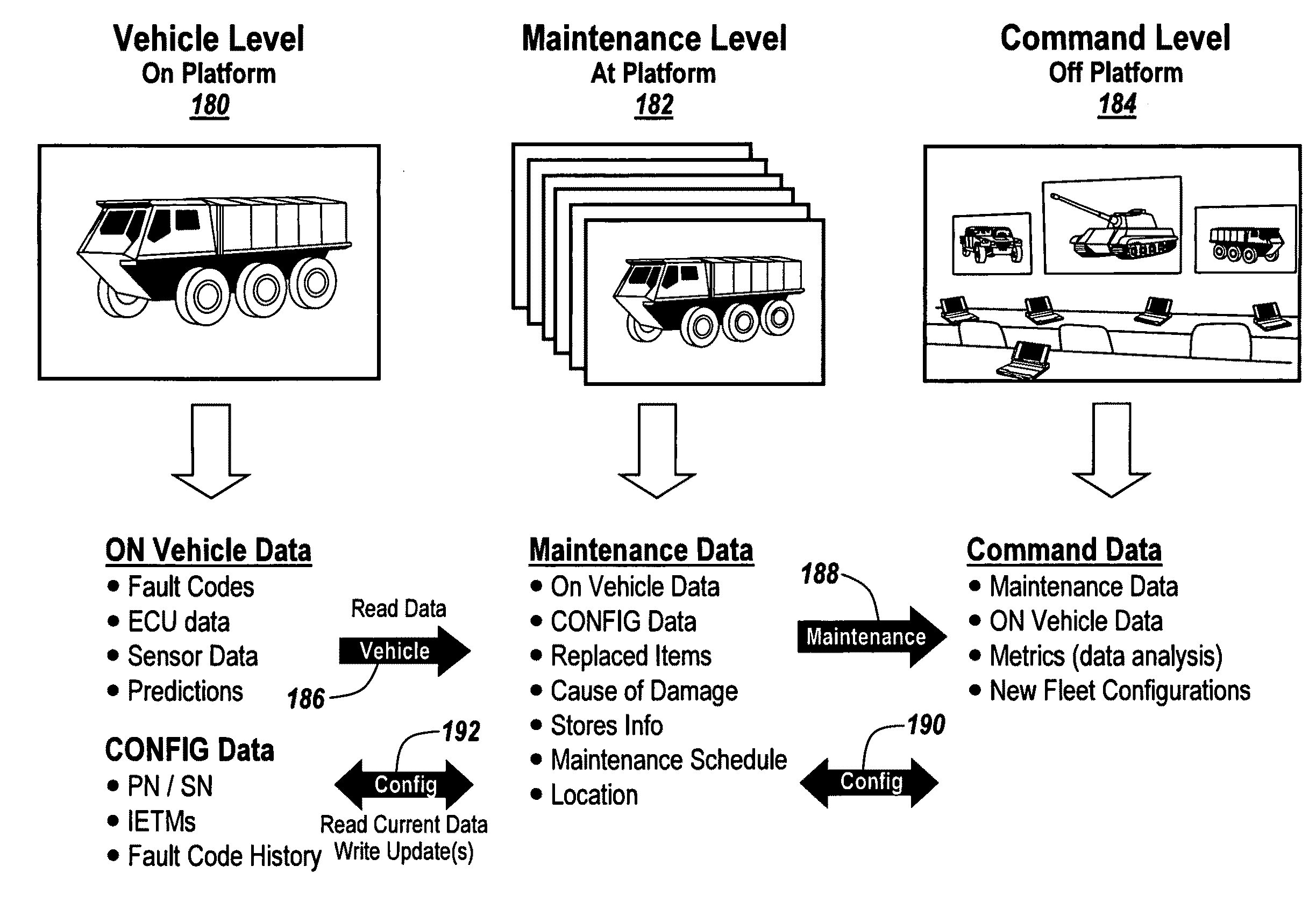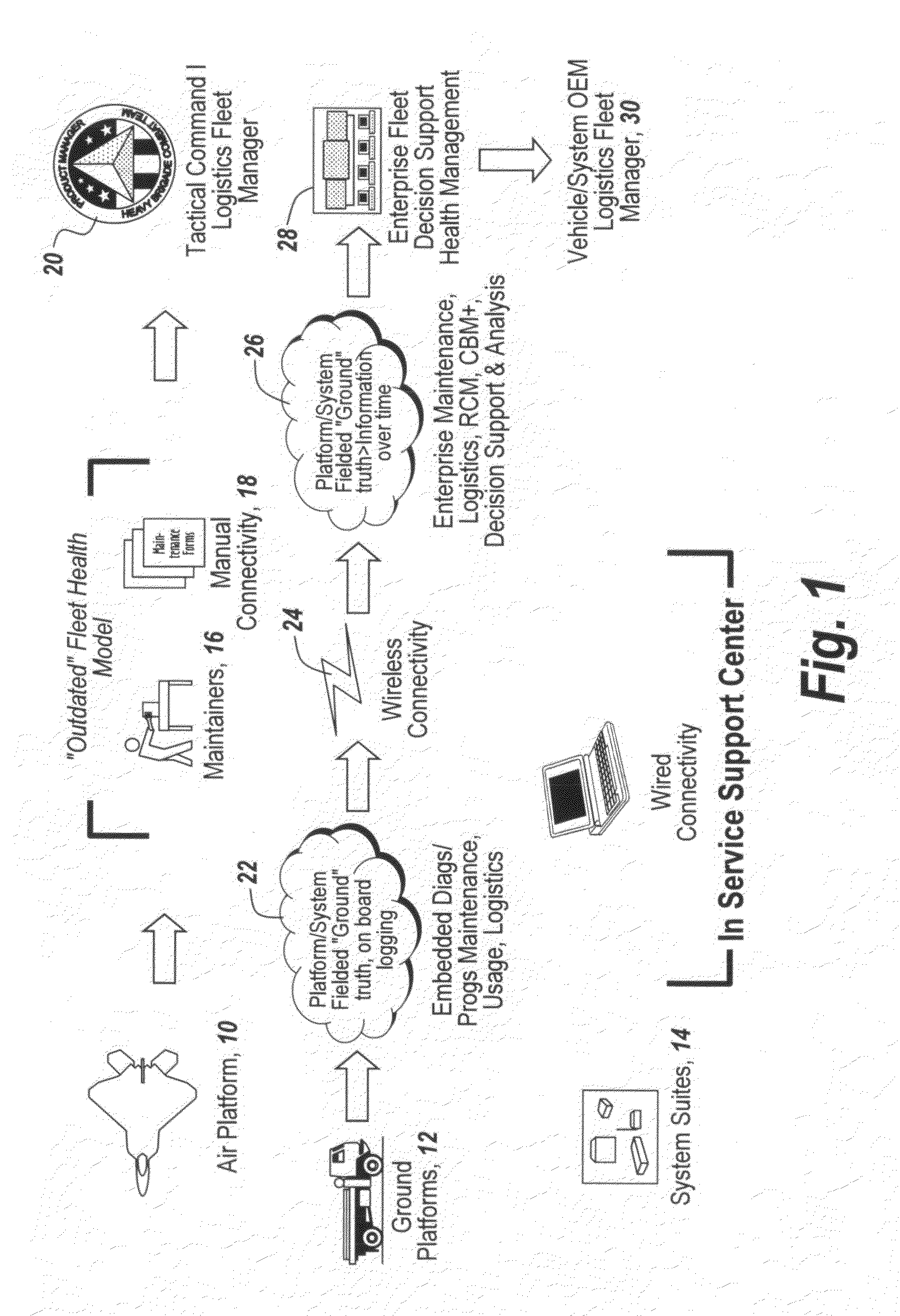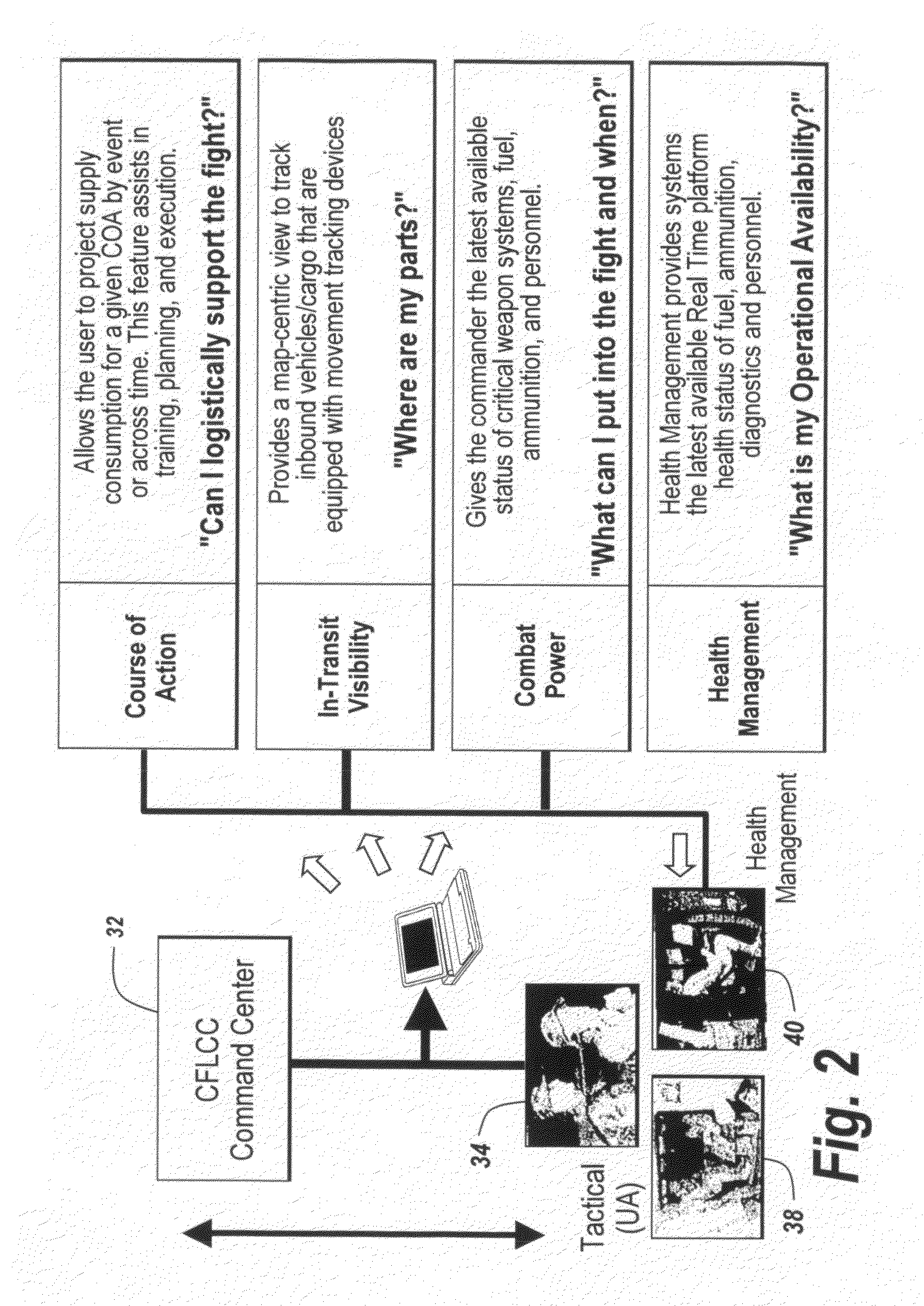In service support center and method of operation
a technology of vehicle support and service support, applied in the field of vehicle fleet maintenance, can solve the problems of no data collection, trending or aggregating of manually collected information, and inability to correlate data, so as to increase the awareness of fleet managers and reduce life cycle costs
- Summary
- Abstract
- Description
- Claims
- Application Information
AI Technical Summary
Benefits of technology
Problems solved by technology
Method used
Image
Examples
Embodiment Construction
[0028]Before describing the drawings, the present invention provides a support center which identifies the core capabilities necessary for an information collection, depository, analysis and assessment system, using all available automated and manual means of data collection from ground vehicles, personnel, and at strategic information points. The subject support center involves a collection of tools and services that enables the development of higher level information intelligence and situational awareness / assessment over time so that the overall supportability system, fleet manager awareness, and life cycle costs associated with sustaining a fleet are continuously improved.
[0029]In the context of functional capabilities, a centralized database is provided to obtain, process and store information and present it to stakeholders.
[0030]Those skilled in the art will appreciate that various tools may be used in the efficient practice of this invention. Reliability Centered Maintenance (...
PUM
 Login to View More
Login to View More Abstract
Description
Claims
Application Information
 Login to View More
Login to View More - R&D
- Intellectual Property
- Life Sciences
- Materials
- Tech Scout
- Unparalleled Data Quality
- Higher Quality Content
- 60% Fewer Hallucinations
Browse by: Latest US Patents, China's latest patents, Technical Efficacy Thesaurus, Application Domain, Technology Topic, Popular Technical Reports.
© 2025 PatSnap. All rights reserved.Legal|Privacy policy|Modern Slavery Act Transparency Statement|Sitemap|About US| Contact US: help@patsnap.com



